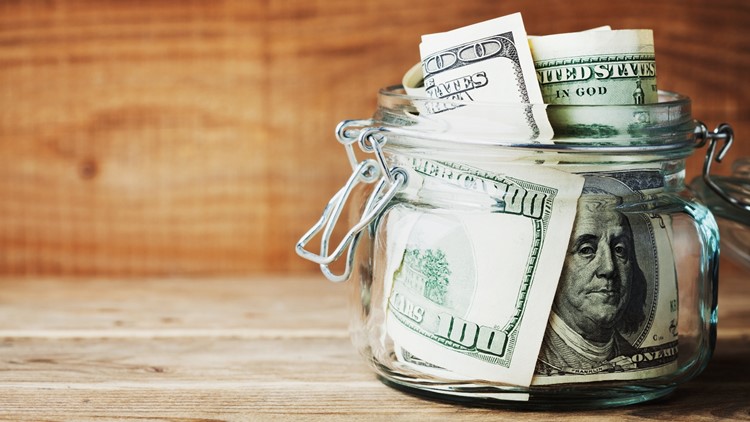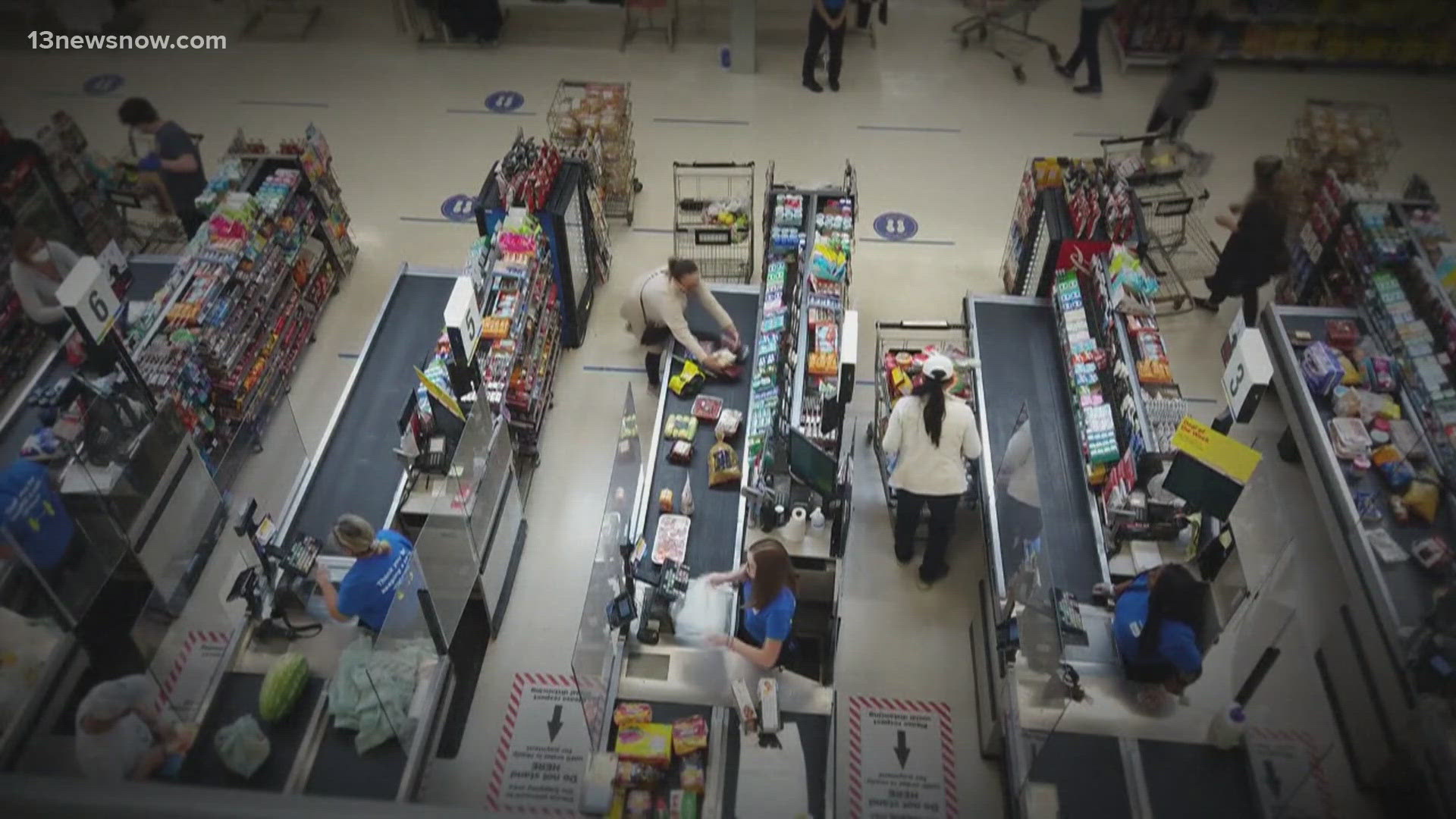NORFOLK, Va. — In 2022, you're probably feeling it: everything is more expensive. That includes filling up your car's tank and buying food at the grocery store.
As the COVID-19 pandemic subsided, inflation made it harder to make ends meet for people in the United States and the rest of the world.
Inflation is a major issue on voters' minds before the 2022 midterm elections, where all 435 House of Representatives seats and dozens of Senate seats are on the ballot.
Republicans, who are looking to retake control of Congress from the Democrats, made inflation a talking point by blaming President Joe Biden and Democratic leaders.
Democrats have responded by highlighting laws they've passed aimed at helping Americans withstand inflation while blaming the economic impact on Russia's war in Ukraine.
Inflation is a complicated and global issue that deserves context outside of political talking points, so 13News Now spoke with two economists from Hampton Roads to break it down:
- Vinod Agarwal, an economics professor at Old Dominion University in Norfolk. He's the deputy director of ODU's Dragas Center for Economic Analysis and Policy.
- Nathaniel Throckmorton, an economics professor at William & Mary in Williamsburg.
To truly see where this began, let's time-travel to 2020 when COVID-19 was spreading across the country and the resulting economic situation was uncertain.
To stop the spread of COVID-19, businesses had to change the way they work, or even close, resulting in job losses and the threat of recession. At one point, in April 2020, the U.S. employment rate hit 14.7%, a big jump from just 4.4% the month before.
Higher demand, low supply
To keep the economy afloat in 2020, Congress passed and then-President Donald Trump signed two key pieces of legislation: the CARES Act and the Consolidated Appropriations Act (CAA). In 2021, Biden and a Democratic-controlled Congress followed up with the American Rescue Plan Act (ARPA).
These laws contained a variety of programs, including direct stimulus payments to adults, expanded unemployment benefits and the Paycheck Protection Program (PPP) to keep employees on the payroll.
In other words, the federal government, under the Trump and Biden administrations, pumped a lot of money into the economy. (Both administrations sent out stimulus checks.)
Additionally, the Federal Reserve, the U.S. central bank, expanded its monetary policy during the pandemic, the most notable change being the drop in interest rates to nearly 0%.
These cuts are used to lower the cost of borrowing, encouraging people and businesses to invest and spend money during economic slowdowns.
When COVID-19 subsided and the economy opened up again, people had money to spend. People's spending behavior had also changed from services to goods during the pandemic.
"They're not going out and spending [money] on leisure and hospitality things, so instead, they're ordering stuff on Amazon, they're renovating their homes or they're buying new homes, and buying more goods to go into those homes," Throckmorton explained.
When demand spiked, prices went up because the supply couldn't keep up with the pace.
Despite this, Agarwal argued stimulus was a good idea because the country was able to recover job losses due to COVID-19 in two years' time. Without the stimulus programs, he believes it would have taken years to recover jobs.
"In my opinion, this was the right thing to do," Agarwal explained. "If they did not do this, we would have had massive unemployment, even today."
Throckmorton believes if the stimulus programs never happened, the price of goods wouldn't have increased as rapidly, but the unanswerable question is "how much less."
Supply chains, labor markets
When demand spiked, supply couldn't keep up for a major reason: supply chain bottlenecks.
An August analysis from the New York Fed's Liberty Street Economics concluded that stimulus and other demand factors wouldn't have driven inflation as high as it became without supply constraints being an issue as well.
Several factors played into the bottleneck, including a spike in COVID-19 outbreaks and cases in a particular place, pandemic business closures and a shortage of workers.
"COVID-19 affected different countries in the world at different times, creating what has come to be known as supply chain shocks," Agarwal explained. "So essentially what you have is demand continued to rise, [while] supply simply did not keep pace, supply actually decreased."
On top of the supply chain issues, Throckmorton explained that the pandemic led to unprecedented wage growth, which increased costs for businesses.
"Even without the CARES Act and the other large fiscal policies, we just had a large number of people leave and reenter the workforce," Throckmorton explained. "There's all this churning in the labor market and when people are looking for new work, they're looking for a job that suits their needs and fits their lifestyle and benefits them."
For businesses to maintain profitability while paying people more, they would have to raise prices, which adds to inflation, Throckmorton said.
Elevated gas prices
You've probably noticed "pain at the pump," something we've all felt this year.
Gas prices skyrocketed following Russia's invasion of Ukraine in February 2022 and the United States' subsequent sanctions, including a ban on Russian oil imports.
The average price of unleaded gasoline hit its highest recorded point on June 14 at $5.016 a gallon, but prices have since declined below $4 a gallon, according to AAA data.
Throckmorton explained that since the demand for gasoline is fixed, any change in supply will affect prices quickly.
"People need to get from point A to point B and they need to drive their cars and their trucks to work, and we need trucks to transport goods across the country, so there's just a fixed demand for oil," Throckmorton said.
He added that the energy markets are global and they respond to all different parts of what's going on in the world.
Some other factors that have impacted gas prices in the U.S. are oil refinery issues and the OPEC+ alliance's decision to drastically cut oil production.
What can be done to fix inflation?
Throughout 2022, the Federal Reserve has drastically raised interest rates in an effort to pump the breaks on inflation. Agarwal said the Fed's goal is to decrease the demand for goods and services, without slamming the breaks too hard.
"What the Federal Reserve is trying to do is control demand, bring it down, slow it down," Agarwal explained.
For example, he pointed out that when interest rates go up, mortgage rates will go up, which should decrease demand for housing and put downward pressure on prices.
Agarwal added that the interest rate hike would also discourage people to spend money on credit cards or other loans, which in turn decreases demand and could relieve supply chain issues.
Throckmorton believes many of the economic issues we're seeing are out of our control but could resolve themselves over time.
"Unfortunately, a lot of serious things and tragic things happened in sequence very closely together," Throckmorton said. "That creates a big economic problem. Had the War in Ukraine not happened, we'd be in a different situation. Had this change in preferences from services to goods by households not happened, we'd be in a different situation."



